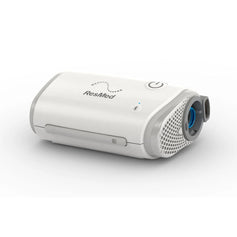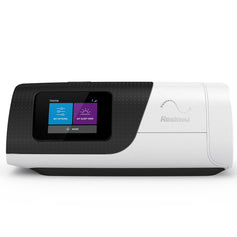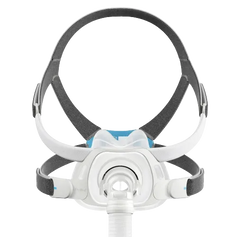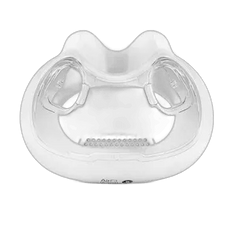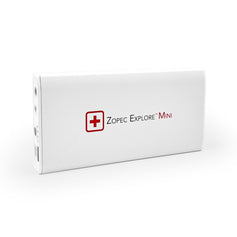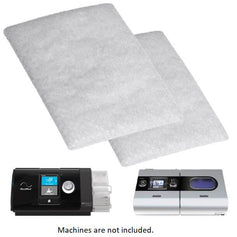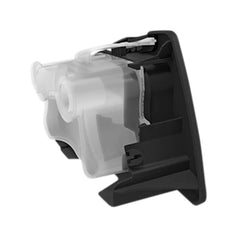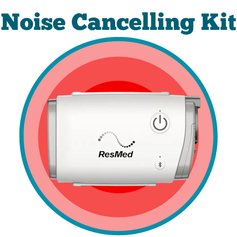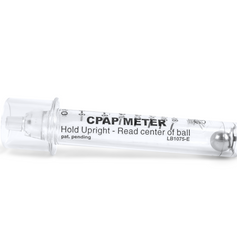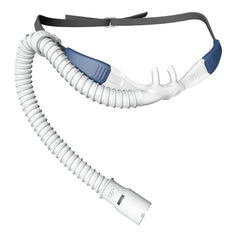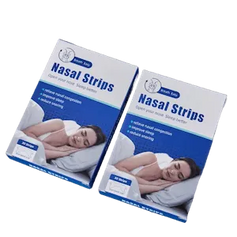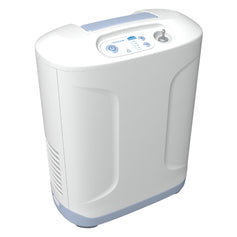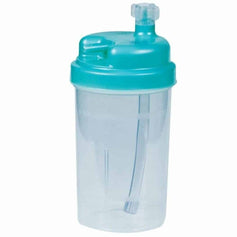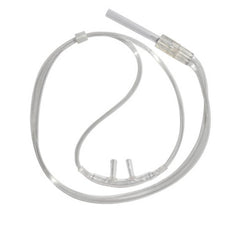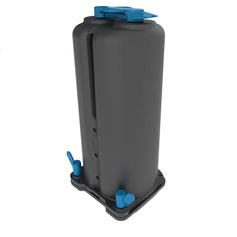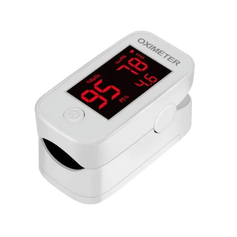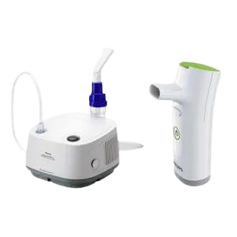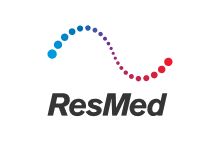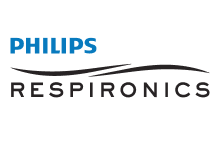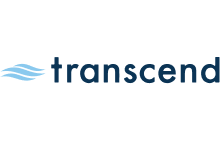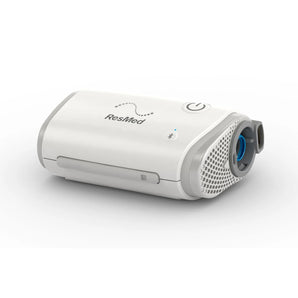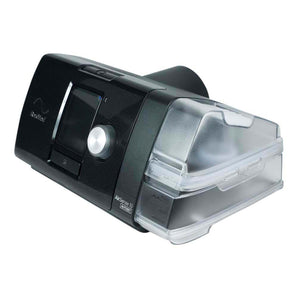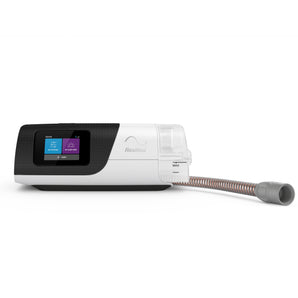Choosing the right sleep apnea machine can feel overwhelming, since it’s a critical health decision that can resolve symptoms like daytime sleepiness. This is a significant issue, as approximately 936 million individuals in the 30-69 age group globally suffer from sleep-disordered breathing.
At RespShop, we offer a complete catalog of sleep solutions, including Continuous Positive Airway Pressure (CPAP) and Bilevel Positive Airway Pressure (BiPAP) machines from leading brands. This guide breaks down the key differences between BiPAP vs CPAP machines to help you make an informed decision based on your specific medical needs and prescription requirements.
CPAP and BiPAP Machines at a Glance
This section provides a quick snapshot of the core differences between these two effective sleep apnea therapies.
The table below highlights the most important distinctions to help you see the verdict quickly.
|
Feature |
CPAP Machine |
BiPAP Machine |
|---|---|---|
|
Pressure Type |
Single, continuous pressure |
Dual, bilevel pressure (higher on inhale, lower on exhale) |
|
Best For |
Mild to moderate Obstructive Sleep Apnea (OSA) |
Severe OSA, CPAP intolerance, or complex conditions |
|
Comfort Level |
Basic (can be hard to exhale against) |
Enhanced (easier to exhale) |
|
Setup Complexity |
Simple and straightforward |
Moderate, requires more settings |
Winner for most users: CPAP machines
For most individuals newly diagnosed with obstructive sleep apnea, a CPAP machine is the gold standard. Its lower cost, simpler setup, and wider insurance acceptance make it the most accessible and effective starting point for therapy. BiPAP use usually requires extra documentation.
Pressure Delivery
The fundamental difference between these machines lies in how they deliver air pressure, measured in centimeters of water pressure (cmH₂O).
A BiPAP machine offers two pressure settings: a higher inspiratory positive airway pressure (IPAP) for inhalation and a lower exhalation positive airway pressure (EPAP) for exhalation. This dual-pressure system is designed to make breathing feel more natural, unlike the constant air pressure delivered by CPAP devices.
This table compares how CPAP and BiPAP machines manage airflow and support.
|
Feature |
CPAP Pressure |
BiPAP Pressure |
|---|---|---|
|
Pressure Settings |
Fixed pressure from 4-20 cmH₂O |
Separate IPAP and EPAP settings |
|
Exhale Comfort |
Can be challenging to exhale against |
Easier with lower pressure (up to 40% resistance reduction) |
|
Breathing Pattern Support |
Continuous pressure flow |
Supports a more natural breathing cycle |
|
Adjustment Ease |
Single setting to adjust |
Dual settings require more complex titration |
|
Clinical Applications |
Standard OSA treatment |
Complex sleep disorders, COPD, and neuromuscular disease |
Winner: BiPAP treatment
CPAP provides one constant air pressure, which some users find difficult to exhale against, leading to discomfort, bloating (aerophagia), or feelings of claustrophobia when fighting against constant pressure.
A BiPAP machine addresses this issue with a dual-pressure system that reduces pressure during exhalation, making it technologically superior for pure breathing comfort and supporting complex respiratory needs.
However, many users find modern auto-CPAP technology with pressure relief features to be a comfortable and more affordable alternative to CPAP therapy.
|
Key Insight: A BiPAP machine’s lower pressure is designed to solve the common 'fighting against the machine' feeling, making therapy feel more natural. |
Best Use Cases: When CPAP Wins vs When BiPAP Therapy Excels
Your diagnosis and the severity of your obstructive sleep apnea, measured by the Apnea-Hypopnea Index (AHI), are the primary factors in determining the right machine.
The Sleep Foundation defines AHI as the number of breathing pauses per hour of sleep. These and other health factors dictate your CPAP therapy's best course of action.
This table shows which machine suits your specific apnea condition:
|
Scenario |
CPAP (Continuous Positive Airway Pressure) |
BiPAP machine (Bilevel Positive Pressure) |
|---|---|---|
|
OSA Severity |
Gold standard for Mild-Moderate (AHI 5-30) |
Recommended for Severe/Complex (AHI >30) |
|
First-Time Users |
Recommended starting point |
Not typically the first choice |
|
CPAP Intolerance |
N/A |
Ideal solution for pressure intolerance |
|
Co-existing Conditions |
Effective for standalone OSA |
Needed for COPD (Chronic Obstructive Pulmonary Disease), CHF (Congestive Heart Failure), Central Sleep Apnea, neuromuscular disorders, obesity hypoventilation syndrome |
|
Budget Priority |
Best value and most affordable |
Premium investment for necessary cases |
Winner: It depends on the prescription
CPAP treatment is the clear winner for the most common obstructive sleep apnea diagnoses, with high insurance approval rates for documented OSA cases. However, BiPAP machines excel as a powerful, necessary tool for more complex sleep apnea, obesity hypoventilation syndrome, and for those who cannot tolerate CPAP machines.
For example, patients with overlapping respiratory conditions require more advanced support. They are prescribed advanced BiPAP ST/ASV models to ensure proper ventilation throughout the night.
|
Doctor's Tip: Always verify your prescription. It will explicitly state whether you need BiPAP or CPAP therapy and the required pressure settings. |
Cost Analysis: CPAP's Affordability vs BiPAP's Premium Pricing
Financial considerations are a major factor for many patients. While insurance often covers a significant portion, understanding deductibles and co-pays is crucial.
BiPAP machines may require prior authorization, proving medical necessity after a failed continuous positive airway pressure trial. The table breaks down the financial differences between the two options.
|
Cost Factor |
(Continuous Positive Airway Pressure) (Less expensive) |
BiPAP (Bilevel Positive Airway Pressure) (More expensive) |
|---|---|---|
|
Entry-Level Price |
More affordable initial investment |
Higher starting price point |
|
Premium Models |
Advanced features like auto-adjusting pressure |
Adds advanced ventilation modes (ST, ASV) |
|
Insurance Deductible Impact |
Lower out-of-pocket costs |
Higher out-of-pocket costs |
|
Replacement Parts Cost |
Standard and widely available |
Parts can be more specialized and costly |
|
Long-Term Value |
Excellent ROI for standard OSA |
Excellent ROI for complex cases where compliance is key |
Winner: CPAP machine
Continuous positive airway pressure (CPAP) offers unbeatable affordability for budget-conscious buyers and standard therapy needs.
While a BiPAP machine has a higher upfront cost, its value becomes clear when considering compliance.
Studies show that patients who fail CPAP therapy achieve 56.8% compliance rates with BiPAP, compared to their previous 0% CPAP compliance (as no patients had achieved CMS compliance criteria before the switch).
Improved comfort can significantly increase compliance rates, making it a worthwhile investment for those who struggle with standard CPAP therapy.
|
Pro Tip: Think of cost in terms of long-term compliance. A cheaper machine you can't tolerate is a wasted investment. The higher price of a BiPAP machine is often justified by the improved adherence and health outcomes it provides. |
CPAP vs BiPAP Therapy Features
Today’s obstructive sleep apnea machines are more than just air pumps; they are smart devices packed with features to improve therapy effectiveness. This table compares modern machine capabilities for enhanced treatment monitoring.
|
Feature |
CPAP therapy |
BiPAP therapy |
|---|---|---|
|
Data Tracking |
Basic compliance data (hours of use, AHI) |
Detailed respiratory events (tidal volume, etc.) |
|
App Connectivity |
Standard on most new models |
Standard on most new models |
|
Humidification Options |
Built-in and integrated options available |
Built-in and integrated options available |
|
Ramp Features |
Standard ramp to ease into pressure |
Enhanced ramp works with dual pressures |
|
Pressure Relief Tech |
Expiratory relief (EPR/C-Flex) mimics BiPAP |
Natural dual-pressure system is the original |
|
Auto-Adjusting Models |
Auto-CPAP technology is widely available |
Auto-BiPAP is available but less common |
Winner: Tie
Both machine types offer excellent features for a comfortable and connected therapy experience for the average user. Modern CPAP and BiPAP devices share many smart features, including app connectivity, integrated humidification, and ramp functions.
However, BiPAP machines offer exclusive advanced monitoring capabilities, including tidal volume and minute ventilation tracking. These detailed respiratory metrics become medically necessary for patients with neuromuscular disorders, Chronic Obstructive Pulmonary Disease (COPD), or congestive heart failure, where your physician needs to monitor not just apnea events but also the quality and depth of each breath.
BiPAP’s advanced clinical data is only a "win" if your doctor requires it for monitoring.
Comfort & Compliance: BiPAP's Edge vs CPAP's Simplicity
The best obstructive sleep apnea machine is the one you will use every night. Comfort is directly linked to compliance, and this is where the differences between CPAP and BiPAP become most apparent in day-to-day use.
The table examines user experience factors determining long-term therapy success.
|
Factor |
Continuous Positive Airway Pressure |
Bilevel Positive Pressure |
|---|---|---|
|
Average Compliance Rate |
Good |
Excellent for intolerant users |
|
Adaptation Period |
Can take weeks to adjust to exhale pressure |
Often easier to adapt to breathing rhythm |
|
Common Complaints |
Difficulty exhaling, mask leaks at high pressure |
Initial setup complexity, higher cost |
|
Mask Compatibility |
Compatible with all mask types |
Compatible with all mask types |
|
User Learning Curve |
Minimal; simple to operate |
Moderate; more settings to understand |
Winner: BiPAP
BiPAP’s superior exhale comfort for users sensitive to pressure provides a clear advantage, directly leading to better long-term therapy compliance and improved health outcomes.
Make the Right Choice with Expert Guidance

Ultimately, your doctor's prescription is the deciding factor. However, understanding these differences helps you become a more informed partner in your own healthcare.
Here's a quick recap:
- Choose CPAP if: You are newly diagnosed with mild to moderate obstructive sleep apnea, are on a budget, and want the simplest, most straightforward therapy.
- Choose BiPAP if: You have been prescribed it for severe or complex sleep apnea, have failed or cannot tolerate CPAP therapy, or have co-existing respiratory conditions.
The most crucial element of success is consistent use. Working closely with your healthcare team and a trusted equipment provider like RespShop will ensure you have the right machine, a perfect mask fit, and the support you need to succeed.
Finding the right mask, such as one with nasal pillows, is just as important as the machine. That's why we offer a 30-day mask guarantee and personalized coaching to ensure a comfortable fit. We also provide compact CPAP machines for travel, so you can maintain your therapy routine wherever life takes you.
How RespShop Can Help
Taking control of your sleep apnea doesn't have to be overwhelming or complicated. With the right partner, you can confidently navigate your therapy journey and find the solutions that work best for your unique needs.
RespShop makes it easy with our 30-day risk-free exchange policy, and our team of registered respiratory therapists is available to answer your questions and provide personalized guidance. We've helped over 1 million customers in 16 years find their perfect match.
We offer VIP Program shipping perks and same-day processing to get you started quickly. Plus, we carry an extensive collection of CPAP, BiPAP, and VPAP machines from the world's best brands.
Your journey to better sleep starts now. Shop RespShop and experience the difference expert care makes.

